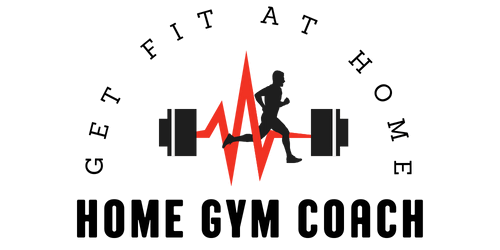If you want to maximize your fitness gains and achieve the best possible results from your workouts, it is crucial to have a well-structured custom workout plan. This article will guide you through the key steps to designing a personalized plan that is tailored to your specific goals and needs. From setting clear objectives to incorporating the right exercises and scheduling rest days, you will learn how to optimize your workouts and achieve the optimal results you desire. Get ready to take your fitness journey to the next level with a well-structured custom workout plan.

Choosing Your Goals
Identify your fitness goals
When designing your custom workout plan, it’s important to first identify your fitness goals. Do you want to lose weight, gain muscle, increase endurance, or improve overall fitness? Having a clear goal in mind will help you stay focused and motivated throughout your journey.
Set specific and measurable goals
Once you have identified your fitness goals, it’s essential to set specific and measurable targets. For example, instead of saying you want to lose weight, specify how much weight you want to lose and in what time frame. Setting specific goals will allow you to track your progress and make adjustments as necessary.
Consider your current fitness level
Before diving into any workout plan, it’s crucial to consider your current fitness level. Assessing your strengths and weaknesses will help you determine where to start and how to progress. If you’re a beginner, it’s important to choose exercises and routines that are suitable for your current abilities.
Review your schedule and time constraints
Another important factor to consider when designing your workout plan is your schedule and time constraints. Be realistic about how much time you can dedicate to exercise each week. If you have a busy schedule, you may need to find shorter, more intense workouts that can fit into your routine. Being mindful of your schedule will help you stick to your plan and make it more sustainable in the long run.
Assessing Your Strengths and Weaknesses
Evaluate your current fitness level
To create an effective workout plan, it’s essential to evaluate your current fitness level. This includes assessing your cardiovascular endurance, muscular strength, flexibility, and overall fitness. Consider performing basic fitness tests or consulting with a fitness professional to get a better understanding of where you currently stand.
Identify your strengths
Once you have assessed your current fitness level, take note of your strengths. These may include areas where you excel, such as having good flexibility or strong leg muscles. Identifying your strengths will allow you to capitalize on them and design a workout plan that helps you improve in other areas while maintaining and enhancing your existing abilities.
Recognize your weaknesses
In addition to identifying your strengths, it’s important to recognize and address your weaknesses. Maybe you struggle with upper body strength or have limited flexibility in certain areas. By acknowledging your weaknesses, you can incorporate targeted exercises into your plan to address these areas and achieve a more balanced overall fitness level.
Consider any injuries or limitations
If you have any injuries or physical limitations, it’s crucial to take those into account when designing your workout plan. Consult with a healthcare professional or a certified trainer to ensure that your exercises and routines are safe and appropriate for your specific situation. Modifying certain exercises or finding alternatives will help you maintain optimal results while preventing further injury.
Designing Your Workout Schedule
Determine the frequency of your workouts
Once you have a clear understanding of your goals, schedule, and current fitness level, it’s time to determine the frequency of your workouts. How many days per week can you commit to exercise? Aim for at least three to five sessions per week to see noticeable improvements. However, be mindful not to overdo it – allowing adequate rest days is equally important for recovery and preventing burnout.
Allocate time for each session
In addition to determining the frequency of your workouts, it’s crucial to allocate an appropriate amount of time for each session. This will depend on the type of exercises you plan to include and the intensity level. On average, aim for 45 minutes to an hour per session. Remember to also allocate time for warm-up and cool-down exercises to prevent injury and promote flexibility.
Consider the duration of your workouts
While the total duration of your workouts is important, it’s also essential to consider how long each individual exercise should last. This will depend on the type of exercise and your fitness level. For example, if you’re a beginner, you may need longer rest periods between sets compared to someone with more experience. Tailor the duration of your exercises and rest periods to your individual needs for optimal results.
Include rest days for recovery
Rest days are just as important as workout days. They allow your body to recover and rebuild, reducing the risk of overuse injuries and fatigue. Consider including one to two rest days per week in your workout schedule. On these days, engage in light activities such as stretching, yoga, or leisurely walks to promote active recovery and mental relaxation.
Choosing the Right Exercises
Select exercises that align with your goals
When choosing exercises for your custom workout plan, it’s important to select ones that align with your specific goals. If you aim to improve cardiovascular endurance, consider incorporating activities like running, cycling, or swimming. For strength training, focus on exercises that target specific muscle groups, such as squats, deadlifts, or push-ups. By selecting exercises that directly contribute to your goals, you can maximize the effectiveness of your workouts.
Include a mix of cardiovascular and strength training exercises
A well-rounded workout plan should include a mix of cardiovascular exercises and strength training. Cardiovascular exercises like jogging, cycling, or HIIT workouts help improve heart health, burn calories, and increase endurance. Strength training exercises, on the other hand, help build muscle mass, improve bone density, and boost metabolism. Including both types of exercises in your plan will provide a comprehensive and balanced approach to fitness.
Incorporate compound exercises for efficiency
Compound exercises are movements that involve multiple muscle groups and joints simultaneously. They are highly efficient and effective for building overall strength and functional fitness. Examples of compound exercises include squats, lunges, bench press, and pull-ups. By incorporating compound exercises into your workout plan, you can save time while working multiple muscle groups at once.
Consider incorporating flexibility and mobility exercises
In addition to cardiovascular and strength training exercises, it’s important to include flexibility and mobility exercises in your workout plan. These exercises help improve range of motion, prevent injuries, and enhance overall performance. Consider incorporating activities like yoga, Pilates, or stretching routines to improve flexibility and promote joint health.

Creating a Balanced Exercise Routine
Include exercises that target different muscle groups
To create a well-rounded workout plan, it’s important to include exercises that target different muscle groups. This will help prevent muscle imbalances and ensure overall strength and stability. For example, if you include upper body exercises, such as push-ups or shoulder presses, also incorporate lower body exercises like squats or lunges. Balancing your muscle group targeting will result in a more symmetrical and functional physique.
Incorporate both upper and lower body workouts
In addition to targeting different muscle groups, it’s essential to incorporate both upper and lower body workouts into your routine. This will ensure that you achieve overall strength and balance throughout your entire body. Neglecting either the upper or lower body can lead to muscle imbalances and restrict your overall progress. By including exercises for both areas, you will achieve a harmonious and well-proportioned physique.
Balance your cardio and strength training sessions
For optimal results, it’s important to balance your cardio and strength training sessions. While cardiovascular exercises help burn calories and improve endurance, strength training exercises help build muscle and increase metabolism. Aim for a balance between the two, alternating between days focused on cardio and days focused on strength training. This will help you achieve a well-rounded level of fitness.
Allocate time for warm-up and cool-down
To ensure a safe and effective workout, it’s crucial to allocate time for warm-up and cool-down exercises. Warm-up exercises prepare your muscles and joints for physical activity, reducing the risk of injury. Include dynamic stretches, light cardio, or joint mobility exercises in your warm-up routine. Cool-down exercises, on the other hand, help your body recover and restore after intense exercise. Stretching and foam rolling can be included in your cool-down routine to promote flexibility and reduce muscle soreness.
Progressing Your Workout Plan
Start with a beginner or foundation phase
When starting a new workout plan, it’s important to begin with a beginner or foundation phase. This phase allows your body to adapt to the new exercises and gradually increase in strength and endurance. It’s important to prioritize learning proper form and technique during this phase to reduce the risk of injury and build a solid foundation for future progress.
Gradually increase the intensity and difficulty
As you progress in your fitness journey, it’s crucial to gradually increase the intensity and difficulty of your workouts. This can be achieved by adding more weight, increasing repetitions or sets, or decreasing rest periods. Gradually pushing your limits will help you continue to challenge your body and stimulate further improvements.
Incorporate progressive overload principles
To continue making progress and avoid plateauing, it’s important to incorporate progressive overload principles into your workout plan. Progressive overload involves gradually increasing the demands placed on your muscles over time. This can be achieved by increasing weight, volume, or intensity. By consistently progressing your workouts, you will continue to see improvements in strength, endurance, and overall fitness.
Monitor your progress and make necessary adjustments
Throughout your fitness journey, it’s crucial to monitor your progress and make necessary adjustments to your workout plan. Keep track of your weights, repetitions, and sets in a workout journal or fitness tracking app. Regularly assess your progress and make modifications as needed. If you’re not seeing desired results or feel like you’ve hit a plateau, consider changing exercises, rep ranges, or adding new techniques to challenge your body in different ways.

Tracking Your Workouts
Keep a workout journal or use a fitness tracking app
To stay organized and accountable, it’s beneficial to keep a workout journal or use a fitness tracking app. This allows you to record your exercises, sets, repetitions, and weights used during each workout. A workout journal also serves as a motivating tool as you can review your progress and improvements over time. Fitness tracking apps provide a digital alternative and often offer additional features like workout reminders and progress summaries.
Record the exercises, sets, and repetitions performed
When tracking your workouts, be sure to record the exercises, sets, and repetitions performed. This information will help you evaluate your progress and make adjustments to your plan. By keeping a detailed record, you can easily refer back to previous workouts and compare your performance to ensure you’re steadily progressing toward your goals.
Track your progress and improvements over time
One of the benefits of tracking your workouts is being able to see your progress and improvements over time. Reviewing your workout journal or fitness tracking app allows you to celebrate milestones, identify areas of growth, and maintain motivation. Whether it’s noticing that you’ve increased your strength or improved your endurance, tracking your progress serves as a reminder of your hard work and dedication.
Use the data to modify your future workouts
The data you collect from tracking your workouts can be valuable in modifying your future workouts. Analyzing trends, strengths, and weaknesses can help inform your decision-making in terms of exercise selection, intensity level, and volume. If you notice that a particular exercise is consistently challenging or that you’ve plateaued, use this information to make adjustments and design a more effective and targeted workout plan.
Maintaining Motivation and Consistency
Set short-term and long-term rewards
To stay motivated and consistent with your workouts, set both short-term and long-term rewards. Short-term rewards can be as simple as treating yourself to a relaxing bath after completing a tough workout. Long-term rewards can include purchasing new workout clothes or planning a vacation once you achieve a specific fitness goal. These rewards serve as incentives and can help you stay focused and committed to your workout plan.
Find an accountability partner or join a fitness community
Having an accountability partner or joining a fitness community can significantly enhance your motivation and consistency. Find a workout buddy who shares similar goals and can hold you accountable for sticking to your plan. Alternatively, join a fitness class or online group where you can connect with like-minded individuals and share your progress. The support and encouragement you receive from others will help you stay committed and motivated.
Create a supportive environment for your workouts
To foster motivation and consistency, create a supportive environment for your workouts. This can include setting up a designated workout space at home, investing in quality exercise equipment, or playing energizing music during your sessions. By making your workout environment enjoyable and inviting, you’ll be more inclined to stick to your plan and look forward to your workouts.
Make modifications to prevent boredom
Boredom can be a motivation killer, so it’s important to make modifications to your workout plan to keep things interesting. Incorporate new exercises, try different workout formats or classes, or change your training environment occasionally. By introducing variety into your workouts, you’ll stay engaged and excited about each session, making it easier to maintain motivation and consistency.

Listening to Your Body
Pay attention to signs of fatigue or overtraining
Listening to your body is crucial for preventing fatigue and overtraining. Pay attention to signs such as persistent muscle soreness, decreased performance, chronic fatigue, or prolonged recovery periods. These are indications that you may need to scale back your workouts or take additional rest days. Pushing through excessive fatigue can lead to decreased performance, increased risk of injury, and burnout.
Adjust your workout intensity or schedule if needed
If you notice signs of fatigue or overtraining, it’s important to adjust your workout intensity or schedule accordingly. This may involve decreasing the weight, reducing the number of sets or repetitions, or taking an extra rest day. By being responsive to your body’s needs, you can prevent injuries and ensure long-term progress and optimal results.
Take rest days when necessary
Rest days are an essential part of any workout plan. They allow your body to recover, repair, and strengthen. Scheduling regular rest days can help prevent overuse injuries and promote overall well-being. If you’re experiencing excessive fatigue or have been consistently pushing your limits, listen to your body and take a rest day to allow for proper recovery.
Consult a healthcare professional if you experience any pain or discomfort
While some muscle soreness is normal after exercise, experiencing pain or discomfort during or after a workout is not. If you have any concerns or experience persistent pain, it’s important to consult a healthcare professional. They can assess any underlying issues or potential injuries and provide appropriate guidance or treatment. Putting your health and well-being first is crucial for long-term success and optimal results.
Modifying Your Plan as Needed
Reassess your goals periodically
As you progress in your fitness journey, it’s important to periodically reassess your goals. Your priorities may shift, and your desired outcomes may change. Take time to reflect on your progress, values, and aspirations regularly to ensure that your workout plan continues to align with your current goals. Updating or refining your goals will help keep you motivated and focused on the path to optimal results.
Consider changes in your schedule or lifestyle
Life is dynamic, and circumstances change. Consider how changes in your schedule or lifestyle may impact your workout plan. If you have a new job with longer working hours, you may need to adjust the duration or frequency of your workouts. Adapting your plan to reflect changes in your schedule or lifestyle will help you maintain consistency and overcome any potential barriers.
Modify your exercise selection or order
To prevent plateaus and keep your workouts challenging, consider modifying your exercise selection or order. Introducing new exercises can help target different muscle groups and stimulate further progress. Additionally, changing the order in which you perform exercises can provide a fresh stimulus to your muscles and prevent boredom. Continuously adapting your plan will ensure ongoing improvement and optimal results.
Adapt your workouts based on your progress
Lastly, adapt your workouts based on your progress and feedback from your body. If you notice that certain exercises are no longer challenging, it may be time to increase the weight, repetitions, or sets. Alternatively, if you’re struggling with specific exercises or experiencing excessive muscle soreness, you may need to modify or replace them with more suitable alternatives. Adapting your workouts allows you to continually progress and avoid stagnant results.
By following these steps and designing a custom workout plan that aligns with your goals and abilities, you can set yourself up for optimal results. Remember to stay consistent, listen to your body, and stay motivated throughout your fitness journey. With dedication and perseverance, you can achieve the level of fitness and well-being you desire.



